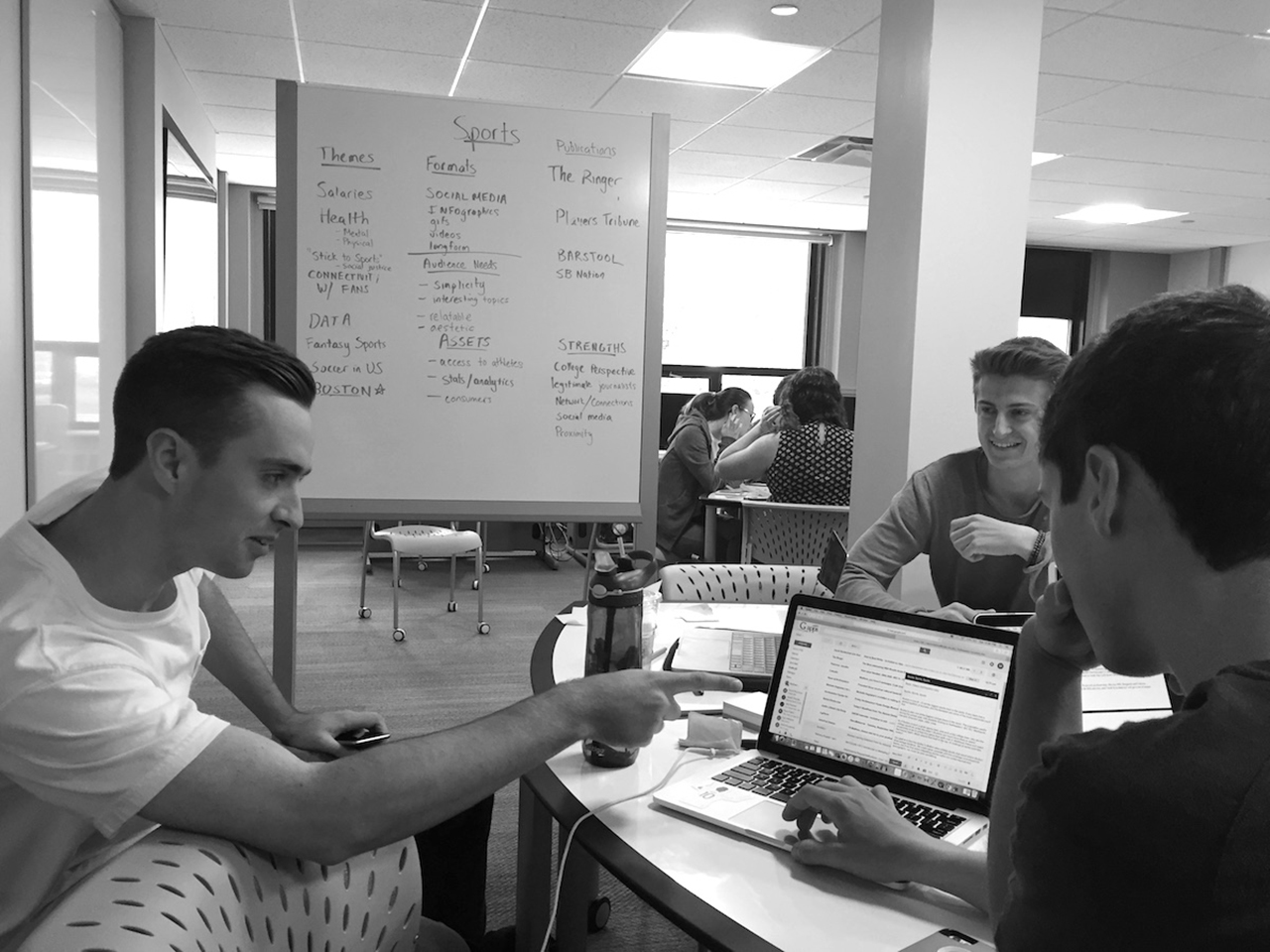This article originally appeared on StoryBench: Tools, Tips and Takeaways on Digital Storytelling From Northeastern University’s School of Journalism.
Can cannabis help address the opioid crisis? What is Northeastern University’s relationship with the environment? What about the university’s role in gentrification? And what is the future of digital storytelling?
Those are the themes of four new publications launched last week by undergraduate students in my course, “Digital Storytelling and Social Media,” at Northeastern’s School of Journalism. In groups, these young reporters used maps, timelines, podcasts, videos and interviews to probe these questions.
And they reported it all directly into email newsletters.
In the space of a few weeks, they conceptualized, audience tested, branded, reported and shipped their newsletters – “The Exit Drug,” “Northeastern’s Environment & Health Unearthed,” “NEU Impact” and “Testing Ground” – and will be creating two more issues before we adjourn for the summer.
I wanted to share a set of guidelines that I hope might help others develop similar courses.

Logos and themes for the email newsletter campaigns that students designed. (Photo: StoryBench)
Why a newsletter? Why not a blog?
Many of the same learning outcomes can be expected from a course designed around blogging, sure. But I see some added value in the newsletter format – and not just because they’re hot. Students learn the design process, how to A/B test subject and headlines, how to grow and segment audience lists, and how journalism should treat the highly personal email inbox.
Let the Students Choose Their Own Beat
The main ingredient to this course is letting the groups self-select along shared interests. I send around a poll on the first week of classes asking students to choose one of the following themes: 1) politics, 2) science, health and the environment, 3) criminal and social justice, 4) media or 5) other. The poll helps me group the students by a broad beat. The following week, I have them brainstorm – using sticky notes and whiteboards – and focus their ultimate newsletter theme.
Do User Interviews
Next, they head to the streets – or the dining hall or the library – to interview prospective readers, understand their news diets and figure out what they want to know about the themes they’ve chosen. The groups first develop a list of questions and an online poll to gather research on their audience – as well as build a list of email addresses. After the first newsletter ships, they repeat this process, continually iterating and improving their product. Encourage them to add friends and family to the email list. Reward the group with the largest reader list or highest open rate.
Have a Hands-On ‘Lab’ Section
We meet twice a week, and the first 100-minute class is reserved for dissecting case studies of digital journalism practices – from newsletter strategies to social media tactics to digital reporting tools to audience engagement – with the occasional guest speaker. The second weekly class meeting is designed as a “lab” section where students work on their newsletters, peer edit work, help each other find sources and learn new tools. “Ship day” is hectic with last-minute drafts and Mailchimp formatting issues, but it’s a relief for all once the newsletters are shipped.
Start the Reporting Early
As with any undergraduate journalism class, it’s tough to get sources to return emails or jump on the phone with students. Three weeks before the newsletter ships, I have students contact at least three sources for their story by email. I encourage students to send me drafts of email interview requests, questions, outlines and, of course, their stories – early and often.

Students in Aleszu Bajak’s Digital Storytelling and Social Media class at Northeastern University plan their email newsletter storytelling in groups. (Photo: StoryBench)
Make Sure to Learn New Digital Tools
On top of all the best practices, case studies and discussions, find space to let the groups tinker with new tools and consider whether or not they’re appropriate for the story they’re telling. Tools like Carto, Google My Maps, JuxtaposeJS, TimelineJS, StorymapJS, Chartbuilder, Google Sheets, Canva, Piktochart, Infogram and Giphy have all been popular. Make extra time during office hours to help students out with these tools.
*I ran the same class last semester and those newsletters – “Beneath the Blindfold” (on campus social justice), “Cortechs” (on psychology and technology), “College Town” (on college sports in Boston), and “Lolitics” (a satirical take on national politics) – were equally impressive.
Storybench’s editor is Aleszu Bajak, a science journalist and former Knight Science Journalism Fellow at MIT. He is an alum of Science Friday, the founder of LatinAmericanScience.org, and is passionate about breaking down the divide between journalists, developers and designers.

